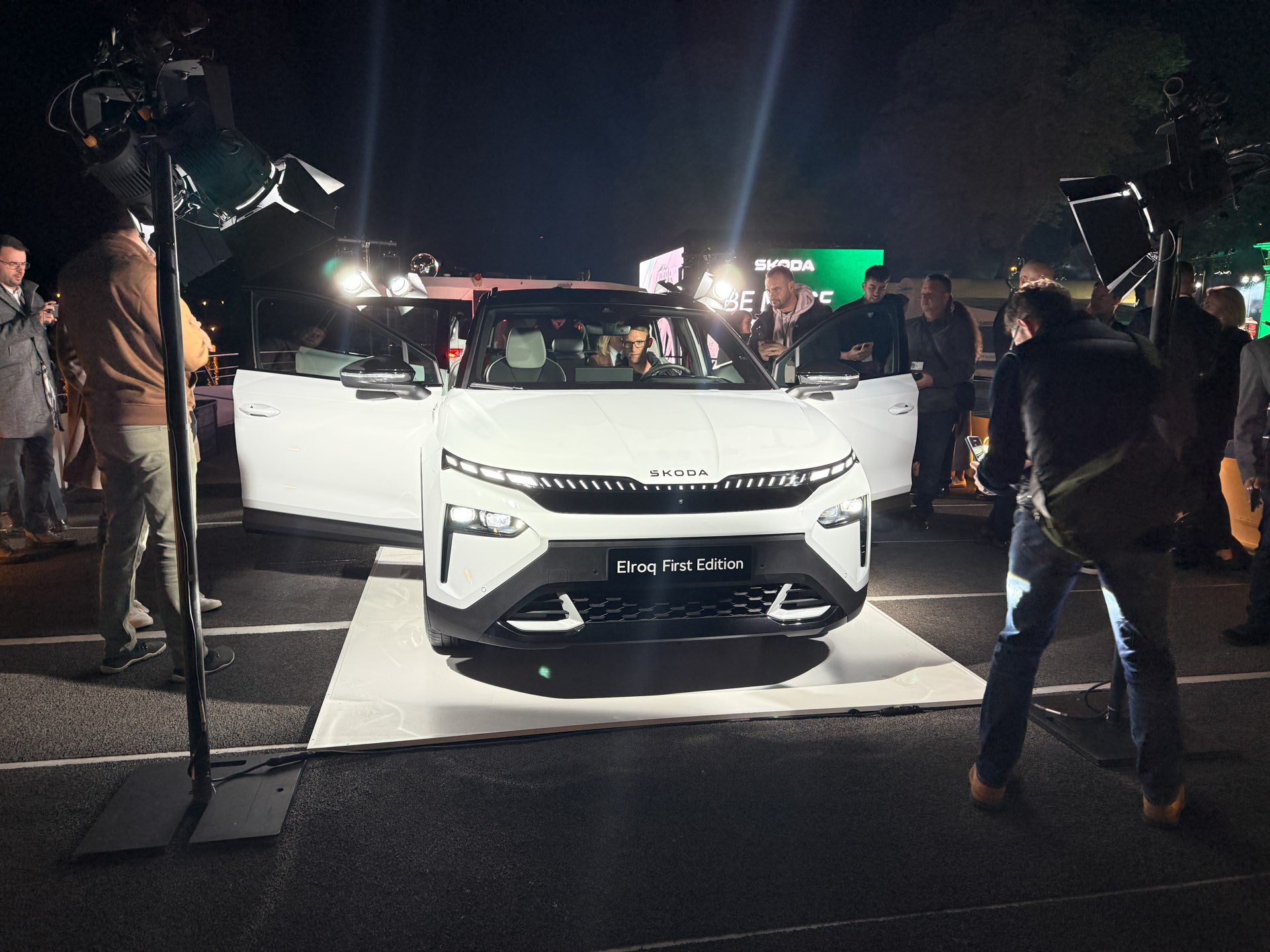iPhone 16 Pro review: the ultimate Goldilocks phone
While many will opt for the Pro Max, the iPhone 16 Pro could be your best option in the range


The smaller of Apple’s two pro models is no longer subject to a lesser camera array. It does everything the Max does in a smaller form, and that is likely to suit some users better. The new larger 6.3-inch screen looks incredible and there’s all the power you’ll ever need. Plus it’s all ready for the Apple Intelligence features.
-
+
Larger display
-
+
5x zoom option on camera
-
+
Longer battery life
-
-
Still less battery life than the Pro Max
-
-
Camera Control function not for everyone
Why you can trust T3

While the iPhone 16 range offers four models, this year more than ever it is a clear choice between two versions in two sizes. While that has in the past seen the Pro Max model being the best choice, I would argue that for many, the standard 16 Pro is better.
That’s because this year there are no clear spec differences between the 16 Pro and Pro Max – not between the 16 and 16 Plus. That means that your choice comes down to your desired screen size. Yes, you get a little more battery life with the bigger models, but ultimately, if you charge once a day, the difference isn’t going to be huge.
The biggest promise of this year’s range is undoubtedly the introduction of Apple Intelligence – its version of AI. However, this won’t be introduced until next month in the US, and for those of us in the UK, not until December.
So what does that leave us with? Luckily despite a very similar design, there is still a lot to talk about in the meantime, especially when it comes to the 16 Pro model. I’ve been using this phone for the last couple of weeks and I now think I’d choose it over the Pro Max. Here’s why…
How much is the iPhone 16 Pro?
The iPhone 16 Pro starts from £999 / $999 for the base model with 128GB storage. It also comes with 256GB, 512GB and 1TB storage options, taking the price up to £1499 / $1499 for the top option.
This is £200 / $200 cheaper than the iPhone 16 Pro Max at base level (as there isn’t a 128GB option for the Pro Max) and £100 / $100 cheaper for like for like storage. So for those wanting 256GB or more, the difference isn't huge.
There is also only £200/ $200 between the base iPhone 16 model and the 16 Pro. For that difference you really do get a lot more phone, whereas with the Pro Max, you are simply getting a bigger screen and battery.
Get all the latest news, reviews, deals and buying guides on gorgeous tech, home and active products from the T3 experts
Sales of the iPhone 16 Pro started on 20th September both online and in store, though pre-sales opened a week earlier.
There are four finishes available for the titanium body of the iPhone 16 Pro: black, white, natural and desert. The desert - a bronze-like finish - is arguably the most interesting, though all look premium.
I tested the black titanium model with 512GB storage, priced at £1299 / $1299.

What's new on the iPhone 16 Pro?
There are a couple of reasons why this year’s Pro model might be more appealing and the first is the size of the screen. Rather than the 6.1-inch display, the 16 Pro now features a larger 6.3-inch display, giving you a little extra real estate to play with.
This has been achieved with only a slight increase in case size. Instead, the bezels are now thinner, especially at the top. What that means is you get a phone that fits in your pocket but delivers a generous screen.
As you might expect, this display is still a Super Retina XDR display and features ProMotion technology ,meaning it has an adaptable frame rate of up to 120Hz and as low as 1Hz. This low refresh rate is what allows the Pro models to provide an always-on Lock Screen.The ProMotion display is one of the big differentiators between the Pro and non-Pro models, especially now the Dynamic Island and Action button feature across the full range.
The second reason why the 16 Pro is now a much more appealing choice is that it now has a 5x telephoto camera. As I mentioned in the intro, the Pro is now identical to the Pro Max, save the screen size and battery, while in the iPhone 15 models, you got different focal lengths on the Pro and Pro Max.
Aside from Apple Intelligence, which we’ll come to later, the big feature change this year is the Camera Control button. This function features on all four new models and provides a dedicated haptic button on the lower right side of the phone which can be used for the camera functions.
Principally it’s a shutter button. Pressing it once will open the camera app, and pressing a second time will take a picture. You can also hold the button down to shoot video.
The clever part though, comes with a light or half press. This brings up an adjustment control, which you can then adjust by sliding your finger up and down on the button as if it were a dial.
A double light press brings up more camera adjustment options to choose from, including exposure compensation, depth of field, zoom, camera, styles and tone. You can swap between these either by sliding your finger along the button or on the screen itself. The big thing missing here for me is focus. It would be great to have a manual focus adjustment or to allow the half press to focus on a preselected point on the screen, like a DSLR would.

How does it look?
The look and feel of the iPhone 16 Pro is very similar to the previous 15 Pro. When placed side by side though, the new model is slightly taller, which allows for that larger screen size. In all other dimensions, the phone appears the same. The actual height is 3mm (0.12 inches) taller and 0.9mm (0.03 inches) wider, with identical depth (which is 8.25mm or 0.32 inches).
That titanium body is a little heavier too, by 12g (0.43 ounces), but not enough that you’d really notice in the hand. Presumably due to that extra height in the screen and body. The water and dust resistance remains the same with up to 6 metres of depth for up to 30 minutes and a rating of IP68.
On the bottom of the device are the holes for the microphones and speaker, plus the USB-C charging port. These are the only openings on the phone, except the SIM tray, which is still used in markets outside the US (including the UK).
I find the titanium finish can scuff if placed in your pocket with other items, like keys and coins, so you might want to consider one of the many cases for the iPhone 16 Pro. However, last year I opted to go case free, and really did prefer the way the phone looked and felt in the hand – and it survived.

iPhone 15 Pro (left), iPhone 16 Pro (right)
The 6.3-inch display
You now get a larger display on the iPhone 16 Pro of 6.3 inches. That’s the biggest increase since the iPhone 12 Pro, which was the first to go to 6.1 inches. This now gives you a resolution of 2622x1206 pixels which remains the same 460 pixels per inch.
As a pro model, this display features the ProMotion technology which once again sees refresh rates of up to 120Hz. This is adaptive though, allowing it to be slowed when those fast refresh rates are not required, to save battery. For the always-on lock screen, it can drop all the way to just 1Hz.
The brightness of the screen offers the same 2,000 nits peak brightness as past models, which is great for the outdoors. What’s new though is that the minimum brightness can be set as low as 1 nit, for when you don’t want to disturb people in the dark – or really want to save battery.
To match that Grade 5 titanium body and glass back, the display features the latest-generation of Ceramic Shield. This is designed to make the iPhone 16 Pro the most durable smartphone ever.
The display does look incredibly good, whether you’re watching video, playing games or just browsing the web. I particularly like that it gives you a really accurate look at the pictures and videos you’ve taken, allowing you to do a full edit on the phone.

Taking photos and video
While the rear camera array may look unchanged on first glance, there’s actually a lot to unwrap here. There are three cameras on the rear, each with their own lens. The main camera is a 48-million-pixel fusion camera. This is capable of providing 24MP images at either 1x (24mm), 1.2x (28mm) or 1.5x (35mm). It can also take 48MP images at 1x or 12MP images at 2x (48MP) zoom.
The fusion element to this camera is due to the fact that it combines a 48MP image with a 12MP image to optimise the detail and tones within an image. This is only done for the 24MP images – as the 48MP files are RAW images.
The second camera is the ultra wide angle, which is a 0.5x zoom or 13mm equivalent. This now also has a 48MP resolution rather than the 12MP on the 15 Pro. This camera is also used to offer macro photography down to 2 cm distance from the lens.
Last year there was a significant difference between the Pro and Pro Max cameras, with the Pro only offering a 3x zoom, compared to the 5x on the Pro Max. Now though, the camera systems are identical. Having the longer zoom is one of the reasons I preferred the 15 Pro Max over the 15 Pro, but with the 16 Pro now offering the same spec, it certainly becomes more appealing.





The images from all three cameras look great, both on the phone and when downloaded to a computer and viewed on a big screen. The iPhone 16 Pro is particularly good at handling images in dark conditions, using multiple shots to improve the exposure and boost detail.
JPEG and HEIF format files when viewed at 100% do show signs of compression, especially in lower light conditions, but that’s normal for these smaller phone camera sensors. Working with the Raw files, which are in DNG format, in an image editor like Adobe Lightroom, will allow you to get better results. However, for most people, the JPEG or HEIF format files look much better straight out of the camera.
I really love the ability in the iPhone 16 Pro’s Portrait mode to change the point of focus after the shot. For images of my dog, it would often focus on the nose, but using this, I could adjust the focus to the eye for a much more pleasing result.








Using the Camera Control button does encourage you to position the phone into a landscape position, though I found as a left-hander, it was often not the way I would naturally turn it. I also found that it was quite easy to accidentally open the camera app using the camera control button, especially when picking the phone up or taking it out of your pocket. It is possible to change the sensitivity of the button in the accessibility settings, or turn it off all together. However, I’d have liked to see an option to just disable it when the phone is locked.
One additional feature on the video side is a Spatial Audio recording option, thanks to the new four-mic array. This gives you options when editing the video to swap between audio mixes to focus on in-frame audio or have a focused studio mix, or a cinematic mix, with a little more background sound. The differences are quite pronounced when flicking between them and do improve your audio on camera. It also gives you the option to remove wind noise, which can also be pretty effective.
You can also now shoot 4K video in 120 frames per second, which allows you to create very high quality slow motion footage. It’s a fun feature to play around with and does give you bags more creative possibilities if you are using the 16 Pro for professional video.







Apple Intelligence
The big sell of the iPhone 16 range is that all four models are compatible with the new Apple Intelligence features in iOS 18. The only other models compatible are the iPhone 15 Pro and Pro Max. So, if you have an iPhone 14 Pro or standard iPhone 15, this is a good reason to upgrade.
The features aren’t currently available on the final software version, with them expected to come later this month to the US, and in December for the UK. For this reason, I can’t give a review of how they perform, just what they can potentially do.
There are a few main areas where Apple Intelligence – or AI – will be particularly prevalent on the iPhone, the first is in the writing tools. The AI will help you reword emails, documents or notes to improve the wording. It will also work to proofread and suggest changes, if you prefer. Perhaps even more usefully, it will summarise large sections of text, whether they are articles, documents or emails.
Apple’s voice assistant Siri also gets a makeover with AI, allowing it to be more context aware. This means that you can ask a question based on what you are doing on your phone, or work between apps, sharing information between your emails, calendar or maps to make organising your life simpler.
The mail app has the summarise function, as well as a smart reply, to help craft those emails quicker and more succinctly. It also gets a new priority tab, to automatically filter your messages by what is important. This is something I’m really looking forward to trying, as it’s something I use all the time in other mail apps.
I will update this section once these features become available.

Performance and battery life
Battery performance on the iPhone 16 Pro has seen a big improvement in this model too. Video playback is now listed as 27 hours, compared to 23 hours on the 15 Pro, and audio playback up from 75 to 85 hours. This in theory should make charging less frequent, even with multiple background apps running.
In practice, it meant that my phone would easily last a full day, once all of my apps had updated. I found it to be not quite as good as my iPhone 15 Pro Max – which tallies with the spec sheets – but still left me with plenty of charge when I put my phone on to charge at night.
In terms of charging, the phone can now charge faster if using a 30W adapter with USB-C or the new MagSafe charger. This means that you can fill around 50% of the battery in 30 minutes, either wired or wirelessly. Whereas once wireless charging was the slower solution, that’s no longer the case – if you have the larger power adapter.
There’s a new chip in the iPhone 16 Pro, which means that performance across the entire phone is faster and has been designed to handle the new Apple Intelligence features. The second generation 3-nanometer A18 Pro chip offers six CPU and six GPU cores, alongside the 16-core neural engine.
This allows for faster ray tracing in games as well as better video and photo processing, thanks to the new image signal processor and video encoder. It also makes the phone more efficient, which is why the battery life has improved.
I ran the Geekbench 6 benchmarking app on the iPhone 16 Pro to get some comparisons and was surprised just how good this A18 Pro chip is. With a multi-core score of 8879, it’s sitting above all of the M1 chips used on the iPads and Macs and not that far below the M2 models. For reference the A17 Pro chip used in the iPhone 15 Pro sat below the M1.

Should I buy the iPhone 16 Pro?
Without the Apple Intelligence features, it would be easy to dismiss the iPhone 16 Pro as having only very small improvements. However, the sum of these improvements makes this model considerably better than previous versions.
If you have had your current phone for two years or more, then the upgrade to the 16 Pro definitely makes sense. Plus, the potential for Apple Intelligence is huge, and once they launch, you’re not going to want to be using a phone that doesn’t support them.
Upgrading from last year’s model might not seem like the big step that it once was, but there are still iterative changes that will tempt those that want to stay ahead of the game. For me, the slightly bigger screen and the 5x camera are those killer features. While the camera control is clever, it’s not essential – I’m glad it’s here but it’s not reason alone to upgrade.
The biggest takeaway for me this year though is that I would recommend the iPhone 16 Pro over the 16 Pro Max to most people. Unless you really need that giant screen and battery, the 16 Pro is easier to type on and fit in your pocket.
Other models to consider
If you’re considering the iPhone 16 Pro, the other main choice is likely to be the iPhone 16 Pro Max. Of course, there are advantages to the Max, including the larger screen and the longer battery life. Plus, if you are looking at a larger capacity model, all that comes for just £100 / $100 more.
If you want Apple Intelligence but aren’t bothered about the longer 5x zoom, it’s also worth looking for deals on the iPhone 15 Pro. This phone still has some great features and is compatible with the AI updates coming.

As T3's Editor-in-Chief, Mat Gallagher has his finger on the pulse for the latest advances in technology. He has written about technology since 2003 and after stints in Beijing, Hong Kong and Chicago is now based in the UK. He’s a true lover of gadgets, but especially anything that involves cameras, Apple, electric cars, musical instruments or travel.